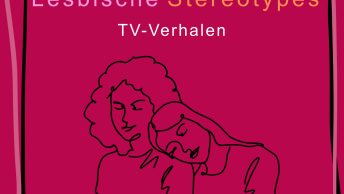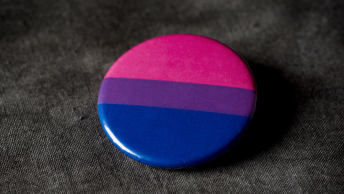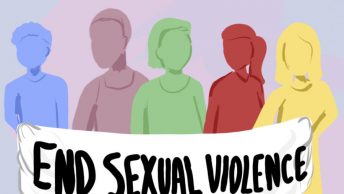In the blogpost series “Banning LGBTQ+ Content in the Russian Media”, the censorship of LGBTQ-related media content in Russia and its implications are studied. The blogposts are based on this thesis (in Dutch), in which more extensive research on this topic can be found.
In this first blogpost, a macrolevel approach is taken to explore the Russian ideological values underlying the anti-gay propaganda law and how the government enforces this law in the Russian media.
Over the past few decades, non-heterosexuality has gradually become more visible in both traditional and social media. The increased media appearance of the LGBTQ+ community, while often still contested, has contributed to a growing social acceptance of the members of this group worldwide. In Russia, however, non-heterosexuality is condemned to this day. Therefore, LGBTQ+-related content is banned from the Russian media.
Non-Heterosexuality in Russia
During the twentieth century, the Soviet Union portrayed itself as a purely universal and heterosexual country. Non-heterosexuality was explicitly denounced and individuals of the LGBTQ+ community were socially excluded. The dissolution of the Soviet Union in 1991 led to an increase in the representation of non-heterosexuality in the mainstream media (Panyan, 2014).
Despite this, views on the LGBTQ+ community generally remained the same, mainly because the Russian government imposed an anti-western narrative on its population. LGBTQ+ rights were portrayed as a neo-imperialistic project in which the west imposed its values onto the rest of the world (Edenborg, 2014).
The Anti-Gay Propaganda Law
In June 2013 the Russian government criminalised “propaganda for non-traditional sexual relations” under the guise of protecting the population, especially minors, from exposure to the LGBTQ+ community. The implementation of the anti-gay propaganda law was aimed at avoiding “misperceptions of the social equivalence of traditional and nontraditional sexual relations” and interest in such relations (Federal Law of the Russian Federation, 2013 in Buyantueva, 2018).
For the Russian digital media landscape, the law means that LGBTQ+ related content is either not accessible at all, or it is framed in a way to fit the Russian anti-LGBTQ+ ideals (Edenborg, 2015).
Firewalls
The Russian government justifies the anti-gay propaganda law by framing the internet as a threat to the country’s values and its population’s safety (Nisbet et al., 2017). This threat rhetoric convinces the Russian population of the anti-LGBTQ+ ideology, thus creating a psychological firewall that prevents the Russian population from wanting to access LGBTQ+ related media content. This way the government is able to keep societal opposition to the anti-gay propaganda law to a minimum.
Aside from creating psychological firewalls to LGBTQ+ related media content, the Russian government implements various forms of digital firewalls to deny internet users access to certain networks and LGBTQ+-related content. Instead, the government offers “safer” platforms in the Russian cyberspace RUNET (Nisbet et al., 2017). RUNET is a digital space with its own search engine, social network sites and e-mail services, all of which are under the control of Russian authorities (Deibert et al., 2010).
Opportunities on the Margins of the Law
Despite the anti-gay propaganda law, there are a few possibilities for LGBTQ+ individuals to communicate via digital media. Seeing as non-heterosexuality is not explicitly forbidden in Russia, forums, blogs and social networks containing LGBTQ+ related content are permitted, provided that they are continuously monitored by Russian authorities and inaccessible to minors (Buyantueva 2018). These platforms can provide safe spaces for LGBTQ+ individuals to communicate about their sexuality without being physically harassed or attacked.
One such platform is O-zine, a digital media channel focused on celebrating queerness in all aspects of life. Since its founding in 2018, O-zine has become an important digital space for the Russian LGBTQ+ community (Fedorova, 2020). Online platforms such as O-zine do not rule out the possibility of verbal and emotional abuse by anti-LGBTQ+ activists, however (Buyantueva 2018). Seeing as anti-queer views dominate in Russia, such online abuse is not uncommon here.
Media Narratives
In today’s digitalised world, media narratives play an increasingly dominant role in the construction of societal views and values on any given topic. Seeing as the anti-gay propaganda law in Russia severely limits LGBTQ+-related media content, the question arises what consequences the law has for the media portrayal of this community, and how this affects its member’s well-being and position in society. In the second blogpost of this series, a mesolevel approach is taken to explore the media narratives surrounding the LGBTQ+ community in Russia.
Jasmijn ter Haar, Bachelor student Liberal Arts and Sciences at the University of Utrecht
References
Buyantueva, R. (2018). LGBT Rights Activism and Homophobia in Russia. Journal of Homosexuality, 65(4), 456–483.
Deibert, R., Palfrey, J., Rohozinski, R., Zittrain, J., & OpenNet Initiative (Red.). (2010). Access controlled: The shaping of power, rights, and rule in cyberspace. MIT Press.
Edenborg, E. (2015). Banning “Homosexual Propaganda”: Belonging and Visibility in Contemporary Russian Media. Sexuality & Culture, 19(2), 256–274.
Fedorova, A. (2020). O-Zine. Dazed. Accessed: 9 May 2021, via Dazeddigital.com
Nisbet, E. C., Kamenchuk, O., & Dal, A. (2017). A Psychological Firewall? Risk Perceptions and Public Support for Online Censorship in Russia: Russia’s Psychological Firewall. Social Science Quarterly, 98(3), 958–975.
Panyan, K. (2014). LGBT Rights and the Role of Mass Media in the Russian Federation and the United States.
Photo
Pixabay









